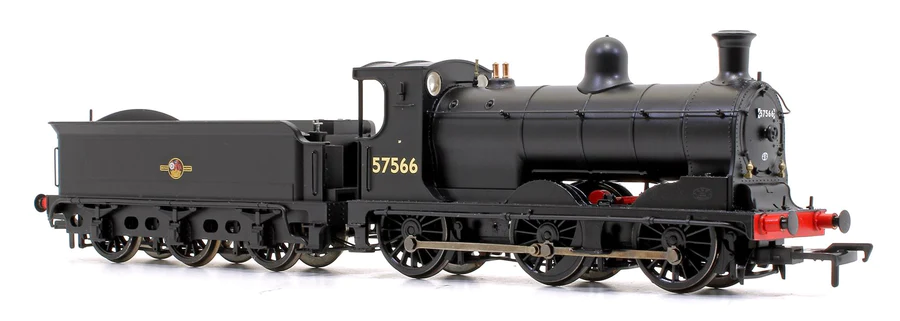0-6-0 Steam Locomotive
CR 812, BR 57566
BR Black Late Crest
18pin DCC Sound
Preserved British Steam Locomotives
The locomotives were produced during the time that John McIntosh was Chief Mechanical Engineer of the Caledonian Railway (1895 -1914). The first 17 locomotives were built at the Caledonian’s St. Rollox works during 1899 (Nos. 812 – 828). A further 12 were built at St. Rollox later that year.
At the turn of the last century the Caledonian found itself to be short of engines suitable for mineral traffic. With St. Rollox fully committed to other work, it turned to three outside contractors (Neilson Reid, Sharp Stewart and Dübs) to build 50 more engines between them using the Class 812 drawings, orders being placed on December 29th 1898. The engines from the outside contractors differed from the original batch only in having Drummond style number plates (the originals having the McIntosh type) and three link couplings.
The first 17 locomotives were officially mixed traffic locomotives but were turned out in the distinctive Caledonian blue livery. Some had Westinghouse pumps and screw link couplings to enable them to be used on passenger services. The remaining members of the class spent much of their time working coal and other mineral trains around Scotland. Under LMS ownership after 1923, the class were painted in black livery and lost their Westinghouse pumps.
The first of the class was withdrawn in 1946 and the last in 1963. No.828 is the sole survivor having been earmarked for preservation by the Caledonian Railway 828 Trust for display at the Glasgow Museum of Transport then located in a former Glasgow Corporation Tram Depot. It was restored at Cowlairs Works during 1966 and painted in Caledonian Railway blue.
It was the long-term ambition of the owners to restore the locomotive to full working order and in October 1980 it was moved to the Strathspey Railway where it was rebuilt. Returning to steam in 1992 and to operational traffic in 1993 where it is currently in use.
The locomotive is due major works attention in 2020. Bachmann and Rails of Sheffield would like to thank The Caledonian Railway 828 Trust, the owners of No. 828, for providing facilities and encouragement to turn this project into reality.

